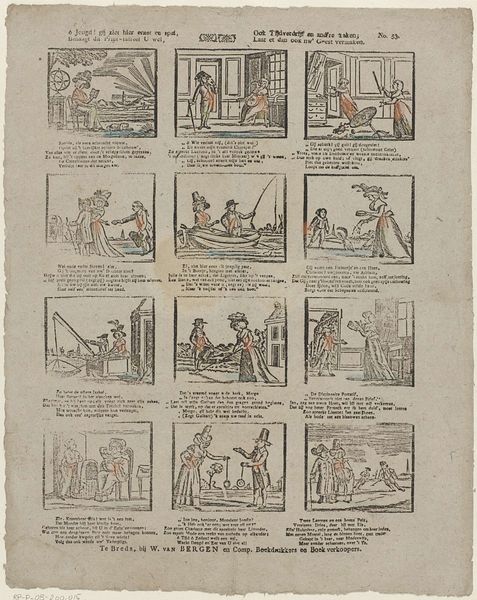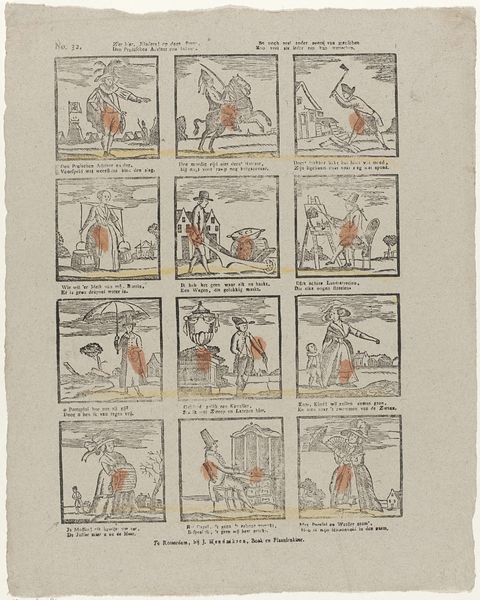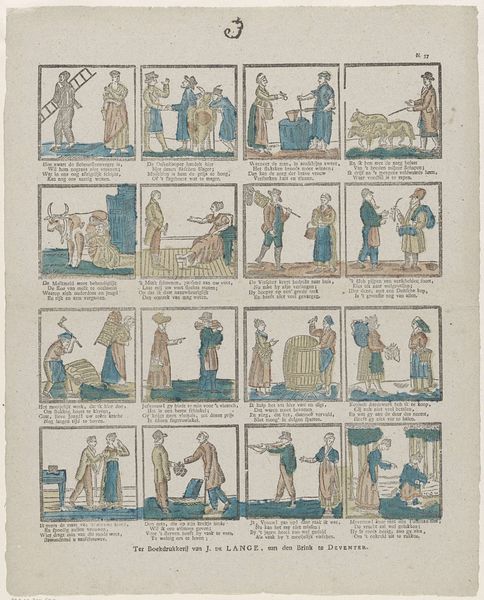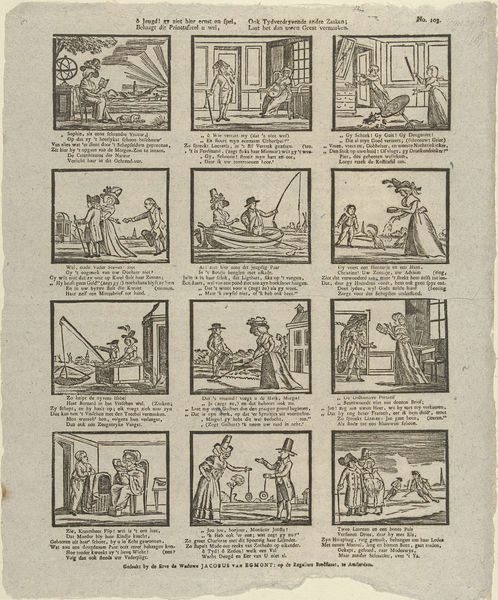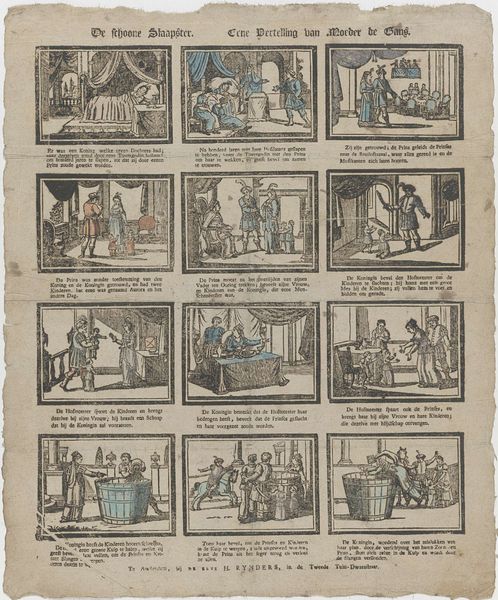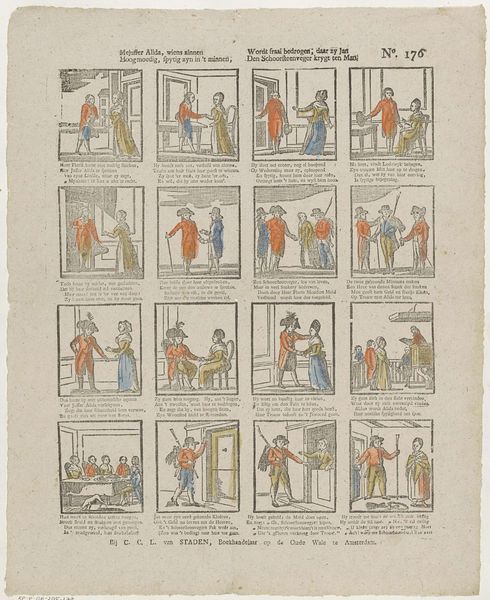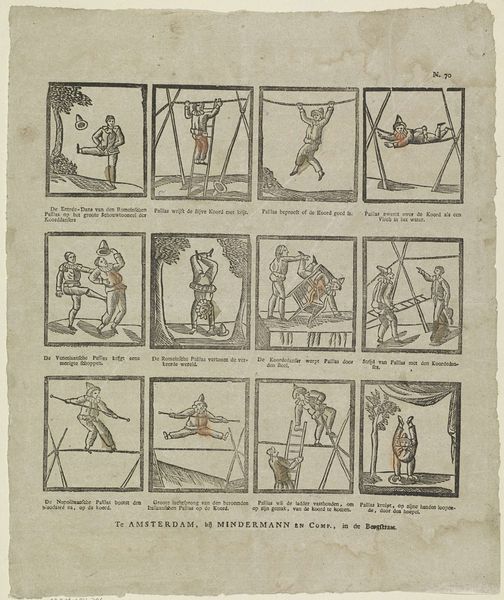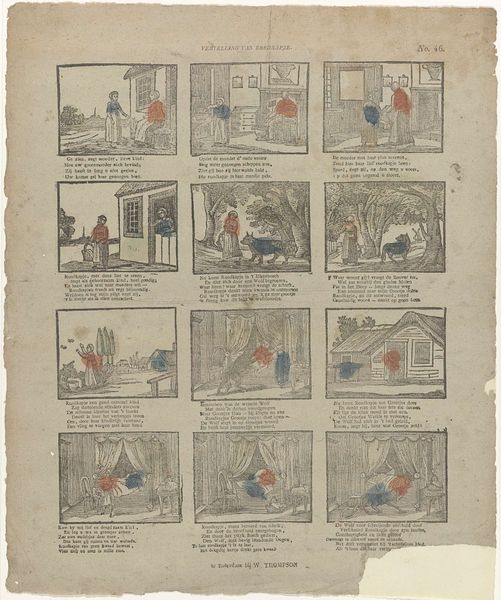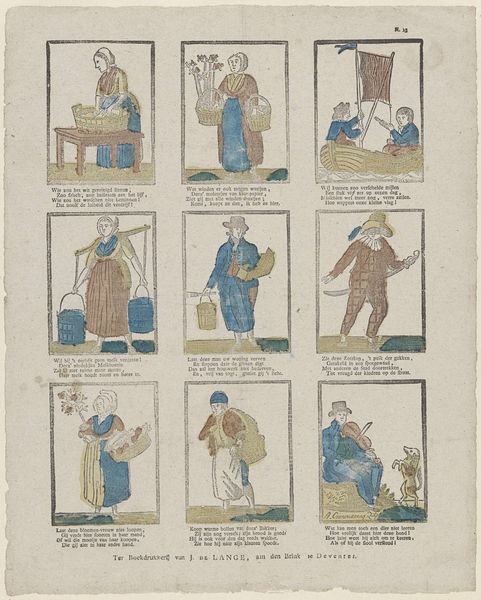
Leef vrolyk vaderlansche jeugd, / By 't nut betragten van de deugd 1791 - 1812
0:00
0:00
print, engraving
#
comic strip sketch
#
narrative-art
#
dutch-golden-age
# print
#
figuration
#
comic
#
genre-painting
#
engraving
Dimensions: height 361 mm, width 280 mm
Copyright: Rijks Museum: Open Domain
Curator: Let’s turn our attention to a fascinating print housed here at the Rijksmuseum, created sometime between 1791 and 1812 by Jacobus Thompson. The title translates to something along the lines of, "Live cheerful Fatherland Youth, / By considering the benefit of virtue.” It is an engraving arranged into something like a comic strip, with small scenes illustrating the message. Editor: My initial reaction is of organized chaos! The eye bounces from one little framed scene to the next, following the rough linework and patches of light, almost haphazard, coloring. I see nine distinct vignettes, each a small world defined by its own internal composition. It seems almost architectural in its structure. Curator: Precisely! These individual panels resonate as small morality plays aimed at young Dutch citizens, a theme typical in narrative art of that era. Each little drawing visualizes lessons – about hard work, avoiding quarrels, and valuing education. This kind of art served as cultural indoctrination on a local, community level, showing how the rising merchant class in Dutch society conceptualized virtuous civic life. Editor: So, are you suggesting these visual structures—the way scenes are framed—aimed to subtly impose a structured mindset in their lives? I mean the geometric framing creates a sense of order even within what are seemingly mundane daily events. Also, the sparse application of color suggests some emotional points and details that we should focus on... Curator: Yes, in part. These are very deliberate visual aids intended to reinforce moral teachings! It shows us what good behavior ideally 'looked like' in Dutch society at the time, subtly suggesting an internalised framework to live by. Each image and symbol work as a social reinforcement mechanism to embed core beliefs. The limited colour highlights elements the artists wants us to reflect on. It might be clothing highlighting societal status or tools reinforcing productivity and diligence. Editor: The composition overall, in its sequential unfolding, feels quite modern. I could easily imagine this concept being translated into a graphic novel today! Even then, there is a timelessness in how people try to communicate virtue. Curator: Yes! So we both agree that it acts as a perfect cross-section to the culture that it came from, as well as it acts like some sort of timeless advice handbook, too? A window to understanding a different historical mind set.
Comments
No comments
Be the first to comment and join the conversation on the ultimate creative platform.
